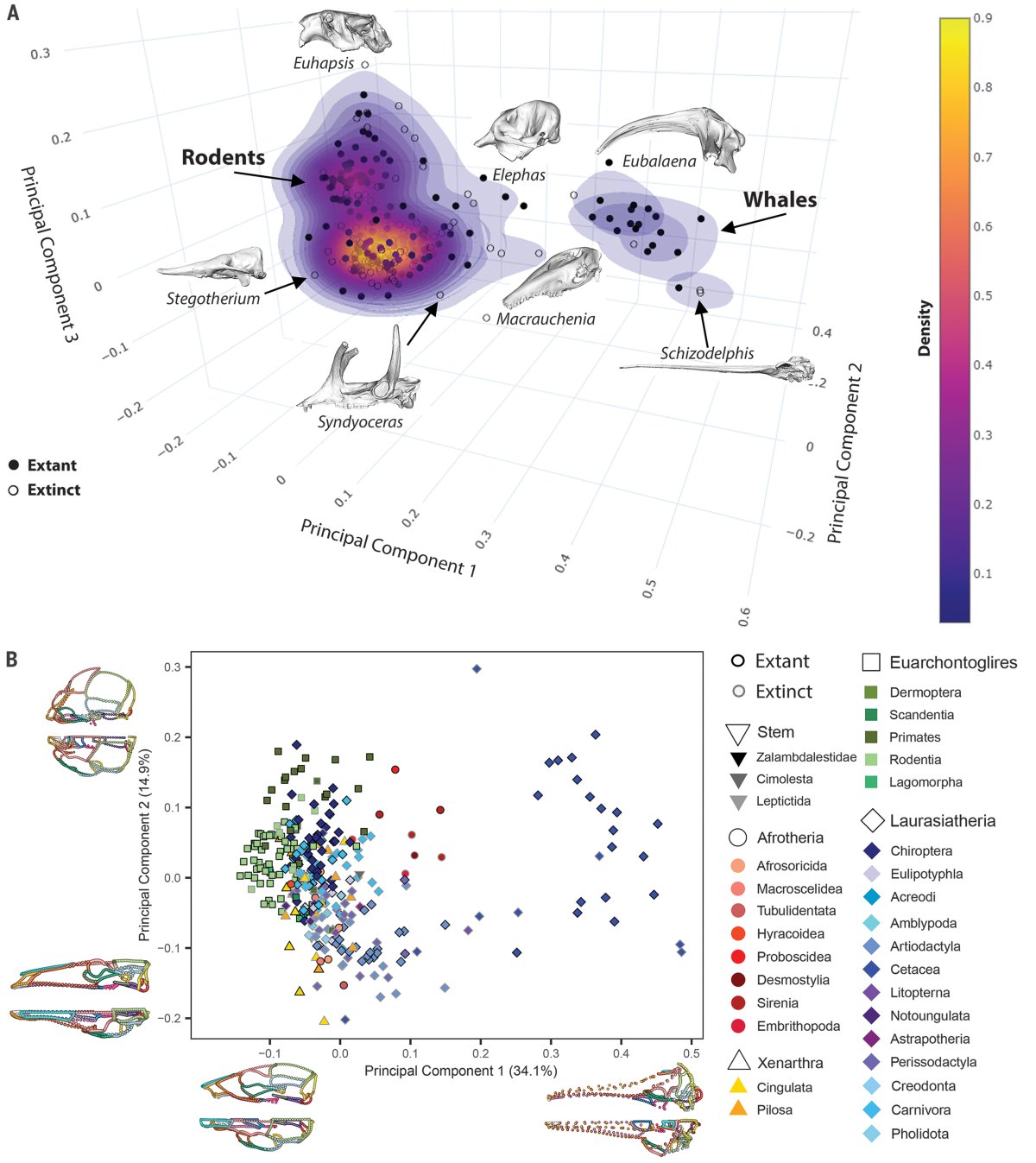Attenuated evolution of mammals through the Cenozoic

Earth & Environmental Sciences Professor and Bell Museum Associate, David Fox, has co-authored a piece in Science on the evolution and diversification of mammals over prehistoric time. Attenuated evolution of mammals through the Cenozoic looked across a large dataset of extinct and extant mammalian skulls, and found that diversification happened earlier in recent evolutionary history, and slows over time.
The time period in question is the Cenozoic Era. This era spans the most recent 65 million years–from the end of the extinction of non-avian dinosaurs to the present. Despite the fact that mammals likely appeared at least 178 million years ago during the Mesozoic, the Cenozoic Era encompasses the most significant diversification of mammals in their evolutionary record. However, 65 million years is still a long time. Until now, experts have mostly utilized methods that measure rates of molecular change or plot total species through time to attempt to understand how rapidly speciation has occurred, often leading to differing theories. This study takes a novel approach, capturing the complexity of living and extinct mammalian skulls and considering how changes in morphology correspond to species evolution over time.

(A) Cranial morphospace for placental mammals showing PC1 to 3, with density contours that reflect three concentrations of placental mammal skull shapes (two dominated by single clades) and highlighting specimens along the edges of each of the high-density regions. (B) Detailed morphospace of PC1 and 2, showing superordinal and ordinal affiliations of specimens and wireframe models of the variation along each axis. Symbols and colors in the morphospace indicate clade affiliation, as described on the legend (version with color-blind palette provided in fig. S2). Colors on skull wireframes denote different cranial elements (see table S1 for details).
To do this, the team of scientists put together a dataset for 322 species spanning the Cenozoic Era and representing every extant family, and a majority of extinct orders. A web of landmarks and semi-landmarks were placed on the mammal craniums, and the specimens were then scanned to create a 3D morphological dataset. The study focuses on Mammal craniums because the skull is home to many critical features responsible for species survival including feeding, fighting, and sensory function.
“This novel approach goes some way toward reconciling the differing interpretations of mammalian evolution that have resulted from just looking at rates of molecular change as opposed to just interpreting speciation patterns and rates from the fossil record.” - Dr. Peter Makovicky, Professor, Earth & Environmental Sciences
The study found that evolutionary rates peak very quickly after the extinction event and decline shortly after. Over time, the rate of evolution continues to decline but is on occasion interrupted by bursts of innovation corresponding to select groups adapting to new environments, such as whales adapting to aquatic habitats.

(A) Rates of evolution through time are shown for one sample tree per root age for topology 2, colored by root age, and clade-specific tip rates and ancestral estimates are shown for topology 2, root age 80 to 85, tree 85, as in Fig. 2. The K/Pg boundary and the PETM are indicated with red and green lines, respectively. (B) Subsetting terminal branch rates by each order demonstrates the slow pace of evolution in stem placental mammals and euarchontoglirans, in contrast to Afrotheria and several laurasiatherian clades. Asterisk indicates wholly extinct orders. (C and D) Estimated ancestral cranial shapes (excluding teeth and bullae) for (C) Placentalia and (D) each superorder, by using Vulpes pallida for the reference mesh, suggest a marked similarity among the estimated MRCAs for placental mammal superorders.
“[This work is] an awesome example of how natural history collections are being studied in new ways with new technology.” - Dr. George Weiblan, Science Director, Bell Museum, Professor, Plant & Microbial Biology